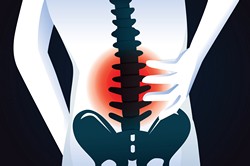Next generation drugs for neuropathic pain
The nerve growth factor (NGF) and endocannabinoid (EC) systems are emerging as central regulators of pain mechanisms. NGF is particularly involved in the onset and progression of CP syndromes, influencing both the neuronal and inflammatory components. Consistently, mutations in genes encoding NGF or its receptor TrkA induce pain insensitivity, suggesting a novel pathway for the development of painkillers. Anti-NGF antibodies have been tested in the clinic, producing a remarkable analgesic effect in patients suffering from osteoarthritis (OA) and low back pain. However, safety concerns emerging from these trials need to be addressed before proceeding with the implementation of such approaches. To address these issues, the EU-funded PAINCAGE project investigated the role of the different components of the NGF system in pain mechanisms and their interactions with the EC system. The work focused on the pathways of pain transmission and perception, from peripheral sensory terminals to the brain. Researchers studied the analgesic properties and underlying mechanisms of antibodies and ligand scavengers targeting NGF or its receptors in various pain models. NGF/TrkA targeting antibodies produced long-lasting analgesic effects that correlated with changes in gene expression and epigenetic mechanisms in the pain pathway. In addition, the discovery of identified biomarkers for neuropathic pain will result in future clinical benefits for the stratification of patients suffering from different neuropathies. With respect to the EC system, the team observed an association of neuropathic pain with a reduction in the expression of the EC receptor CBR1. A novel form of CBR1, specifically expressed in mitochondria, was found to mediate the functional effects of EC in the central nervous system. Furthermore, the consortium developed pre-clinical genetic models and tools to study various pain conditions and map pain pathways under different pathological or pharmacological conditions. Overall, the activities of the study support the development of therapeutics based on the NGF and EC target systems. Furthermore, the PAINCAGE team propose new druggable targets that have emerged from the elucidated mechanisms.
Keywords
Neuropathic pain, NGF, endocannabinoid, TrkA, PAINCAGE



